How to Create a Zapier Integration for Mobile Wallet Through Webhooks #
In this guide, you’ll learn how to set up a Mobile Wallet trigger in WalletThat that will activate an action in another app through Zapier. You can achieve this by linking Zapier’s webhooks with WalletThat’s webhook system, which uses the Mobile Wallet trigger to execute the action automatically. Zapier offers pre-built webhooks that require no coding. To connect both systems, simply select webhooks by Zapier as your trigger, provide some information, copy the URL provided by Zapier, and paste it into WalletThat. This process will link the two webhook systems together. If you require additional information on Zapier webhooks, you can refer to this article: Webhooks Guide
Available Triggers #
- Pass Installed
- Pass Uninstalled
- Pass Updated
- Pass Record Added
Creating a Wallet Trigger #
A Wallet “Trigger” can cause an action on another app to take place when a Pass is installed, uninstalled, or updated or when a new Pass Record is added. The following steps will show you an example of an email being sent from Gmail when a user installs a Mobile Wallet Pass in their Wallet app.
Step 1: Login to Zapier
Login to your Zapier account and create a Zap.

Step 2: Setup the Event Trigger
Choose Webhooks by Zapier for the app event “Trigger” and select the event from drop-down menu. Copy the Custom Webhook URL provided by Zapier.
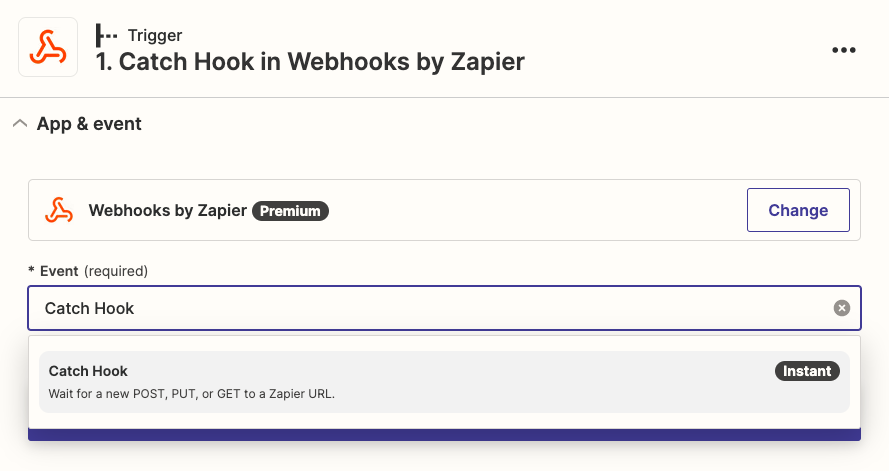
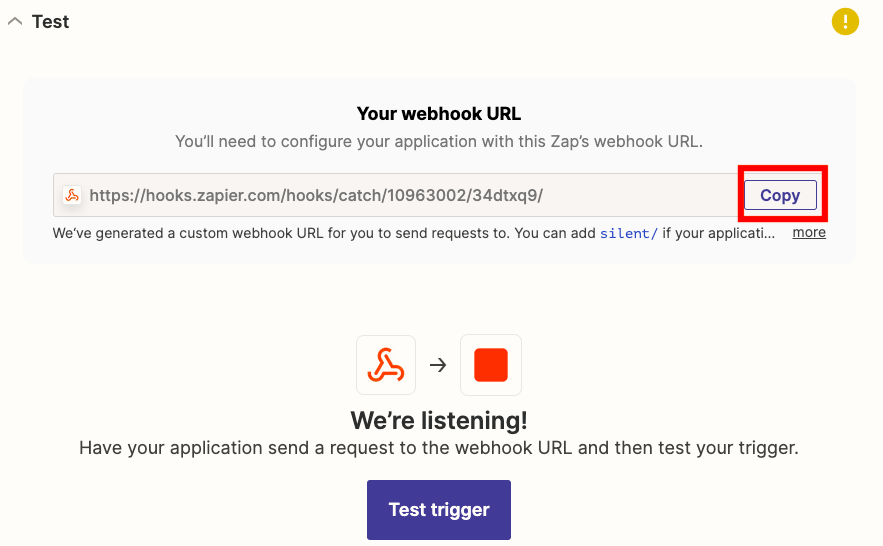
Step 3: Setup the Action Event
Choose the app where the “Action” will take place once a Zap is received. Choose the “Action” event from a different app.
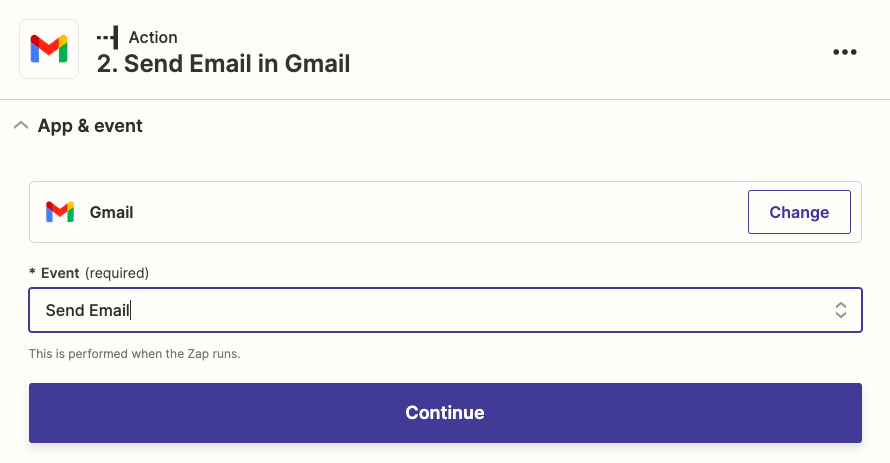
Step 4: Add your Data Fields in Zapier
Add the data fields that you need to pass through the URL to your Zap in Zapier. Each Action you choose may allow for more or less fields to add, depending on the Action app. Map your fields by choosing from the drop-down menu provided in Zapier. These data fields will later be added in WalletThat so be sure to copy or write down the data fields you will be using in the integration. It’s highly recommended that you set a pass-id field that will later be used on the WalletThat platform to differentiate pass data.
Step 5: Login to Your WalletThat Account
Go to the Integrations page in the Tools tab of your WalletThat account. Click ‘Create New’.

Step 6: Create your Wallet Trigger
Choose Wallet as the Platform, Zapier as the Integration provider, and Trigger as the Integration Type.
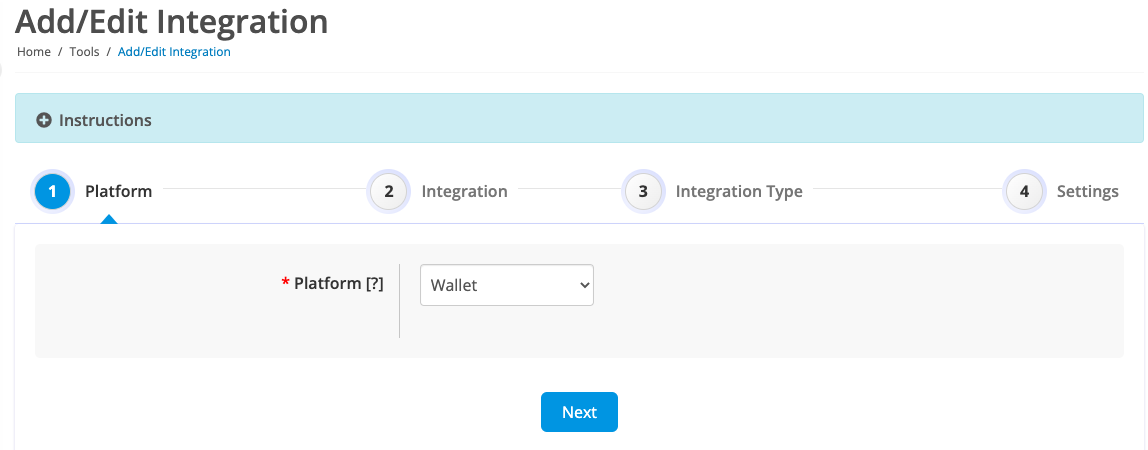
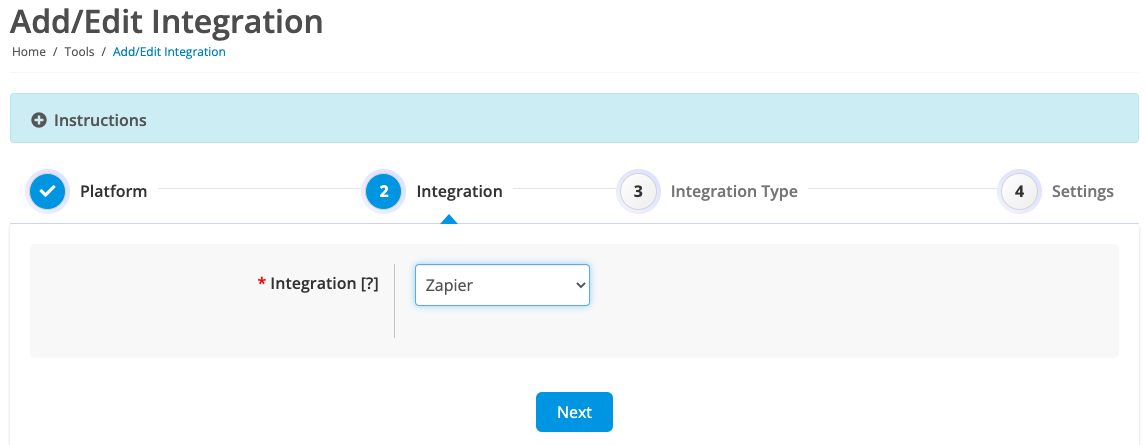
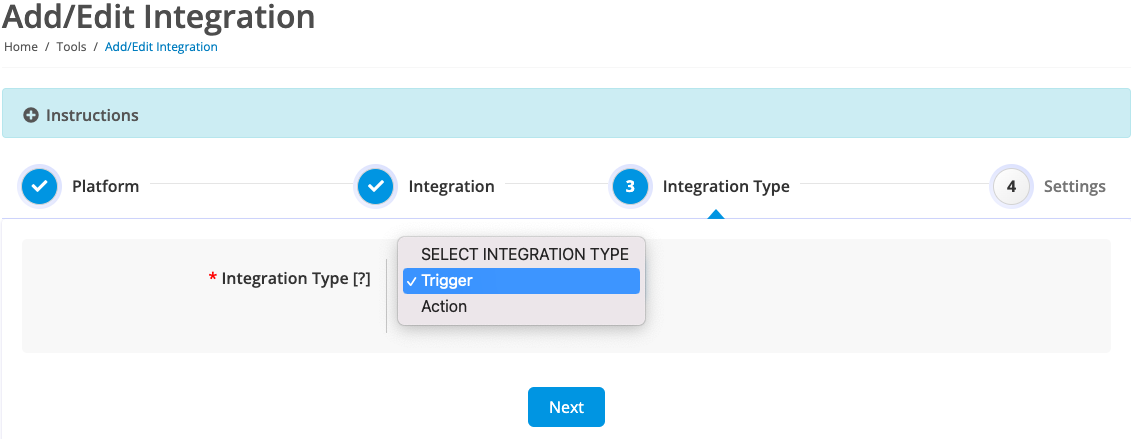
Step 7: Choose your Wallet Trigger
Fill out the integration details and select the type of Mobile Wallet trigger you want to use. WalletThat has four different Mobile Wallet triggers that can cause an action to take place from another app by creating a “Zap.” Each trigger is listed below along with an example of how each might be used.
Option 1: Pass Installed
When a user installs a pass in Apple Wallet or Google Wallet, the “Pass Installed” trigger is used to initiate an action. One example of this trigger is to automatically send an email to the user to express gratitude for installing the pass and offer them a special promotion as a reward.

Option 2: Pass Uninstalled
If a user removes a pass from their Apple Wallet or Google Wallet, the “Pass Uninstalled” trigger is activated to trigger an action. One application of this trigger is to send an email to the user, urging them to reinstall their loyalty card.

Option 3: Pass Updated
The “Pass Updated” trigger causes an action to take place when pass data is updated in the WalletThat system. For example, you can use this trigger to send an email when a loyalty card gets updated with a new reward to let users know how to redeem it.

Option 4: Pass Record Added
The “Pass Record Added” trigger is used to cause an event to occur when a new pass record is added or imported into the WalletThat system. This trigger can be utilized, for example, to update your CRM system to add new loyalty member data when a new data record is added in WalletThat.

Step 8: Enter the Webhook URL from Zapier
Enter the Custom Webhook URL from Step 2 above into the Integration End Point field. Save your integration once all of the necessary fields are filled out.
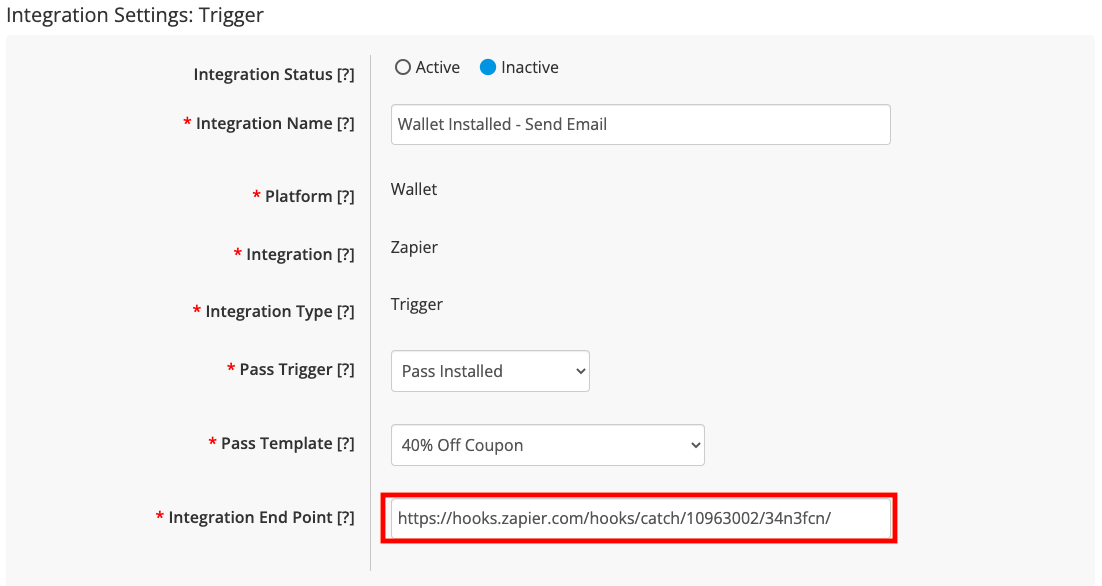
Step 9: Review Integration Data Fields in WalletThat
Each trigger option has a set of data fields or “integration fields” that enable you to send data to the integration endpoint URL provided by Zapier. Review the list of “integration fields” that are available for each trigger and remove any that were not added previously in Zapier from step 4 above. You can also rename the field by editing the “Field Name Identifier” column to match the exact names in Zapier.
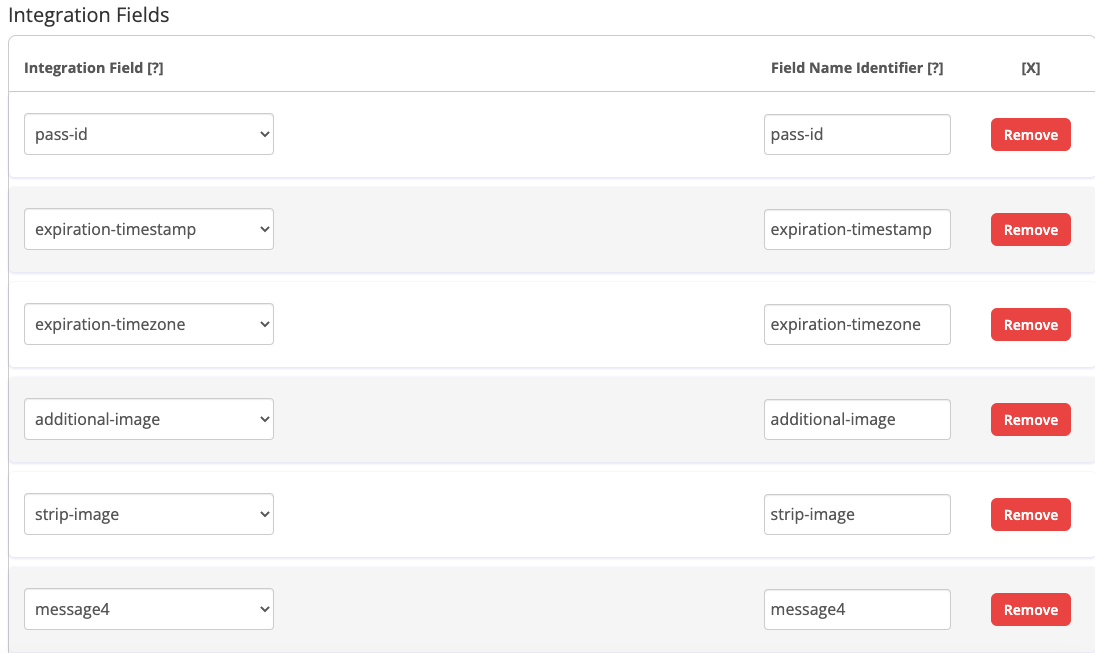
Step 10: Activate your Wallet Trigger Integration
Set the Integration Status to “Active” when you are ready to use your integration.
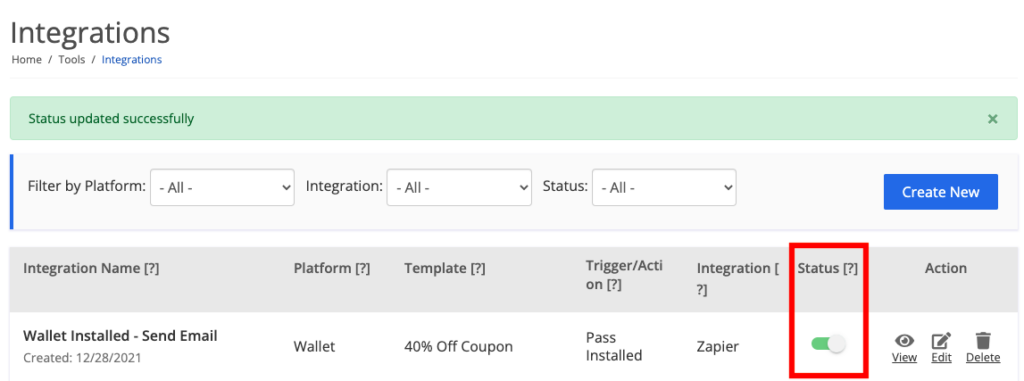
Step 11: Test & Run Your Integration
Once you’ve created your Zap for a Mobile Wallet Trigger in Zapier, you can test the integration to make sure it is working properly. After testing, click “Publish” in the top right corner of the Zap creator and toggle your Zap to “Running” status when you are ready to use it. If you need additional help creating a Zap in Zapier, check out this article: Creating a Zap
